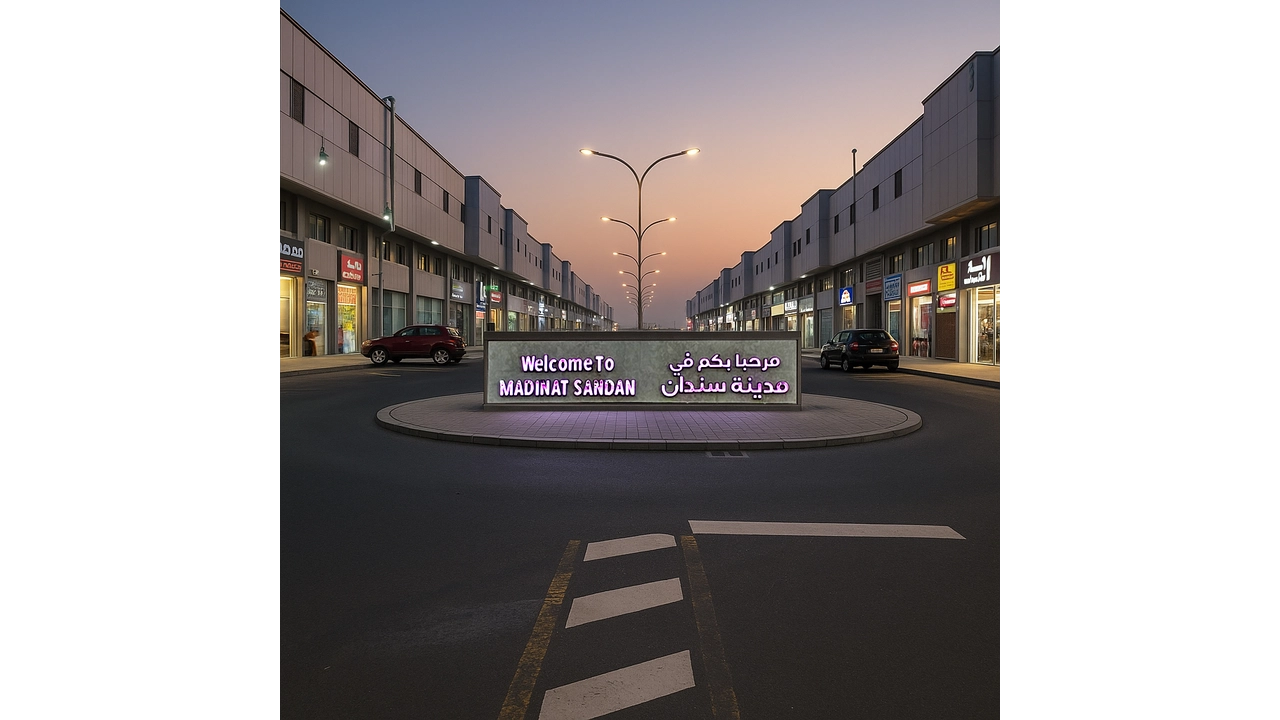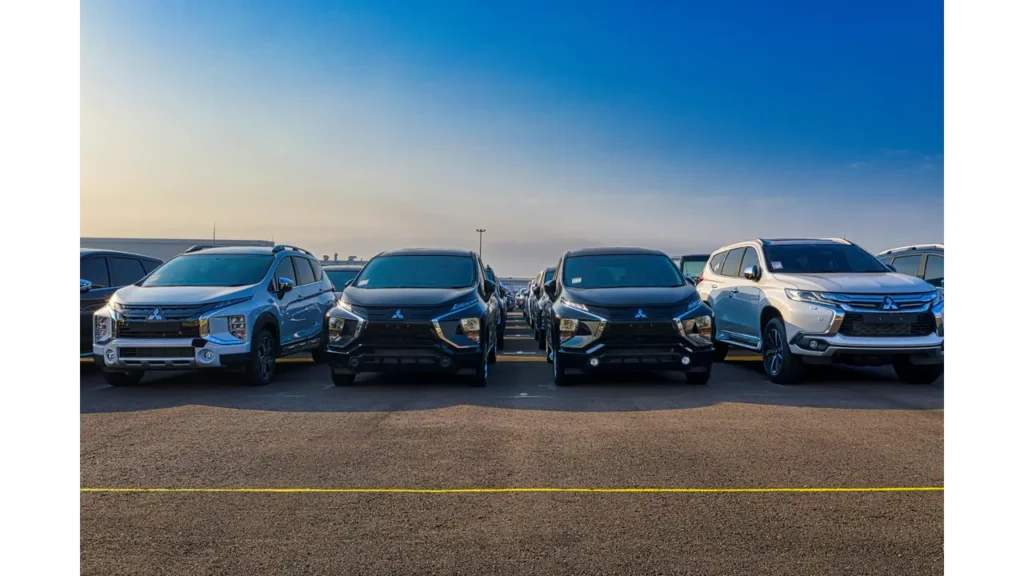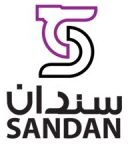Introduction: Starting a Business in Sandan—Where Strategy Meets Infrastructure
Establishing a business in Sandan is not just about acquiring land or licensing a trade name; it’s a calculated entry into one of Oman’s most strategically positioned industrial ecosystems. Nestled between Halban and Nakhal, Sandan Industrial City represents a new blueprint for industrial development in the Sultanate—one that aligns tightly with Oman’s Vision 2040 priorities and emphasizes vertical clustering, private-sector efficiency, and integrated infrastructure.
Investors evaluating Sandan are not merely selecting a location—they are making a decision to embed their operations within a purpose-built ecosystem designed around the demands of modern industry. Whether in automotive, construction materials, warehousing, or light manufacturing, businesses in Sandan benefit from immediate proximity to suppliers, showrooms, logistics hubs, and a ready customer base. The city is not a general-purpose industrial estate; it’s a multi-phase, sector-targeted project designed to reduce logistical friction and maximize operational uptime from day one.
But the journey from decision to execution involves more than just a favorable environment. It requires understanding local laws, choosing the right legal structure, securing the optimal plot, navigating registration procedures, and aligning with Omani compliance requirements—including Omanization quotas, environmental approvals, and utility tie-ins.
This guide offers a step-by-step approach to each layer of that process. From assessing investment strategy and selecting a site, to legal structuring and infrastructure setup, every section is built to deliver actionable, precise, and deeply contextual information tailored to Sandan.
Key Takeaways / TLDR
- Sandan Industrial City offers a highly integrated, sector-clustered environment tailored to key industries like automotive and construction materials.
- Establishing a business here involves multiple layers: site selection, legal setup, infrastructure readiness, and regulatory compliance.
- Sandan’s value lies in reduced operational friction, turnkey infrastructure, and ecosystem proximity—not just land cost or plot size.
- This guide dissects each step, aligning investor decisions with both strategic opportunities and regulatory realities in Oman.
Table of Contents
Understanding the Sandan Industrial Ecosystem
Sandan Industrial City is not a generic industrial park—it’s Oman’s first privately developed, fully integrated industrial ecosystem with embedded commercial, service, and residential zones. The development spans over 250,000 square meters and is strategically located off the Muscat Expressway, offering immediate logistical advantages for goods movement and market access. Its design centers around clustering industries in a way that compresses supply chains, minimizes downtime, and encourages inter-business synergies.
The city is structured into distinct zones, each serving a specific vertical. In the automotive section, businesses can access ready-made units for car showrooms, spare parts shops, detailing services, and mechanical workshops—all within walkable proximity. This not only shortens supply cycles but encourages co-location between B2B service providers and end-user retailers. For instance, a spare parts distributor could set up adjacent to a garage and a car dealership, creating an organic revenue loop within the same cluster.
Construction-related businesses benefit from another specialized section of Sandan, featuring aluminum, carpentry, tiling, and building materials suppliers. These sectors are intentionally grouped to facilitate immediate material flow and reduce project lag times—vital for time-sensitive construction contracts. The presence of logistics service providers and warehouse zones further supports rapid procurement and last-mile delivery.
Support infrastructure includes fully developed road networks, pre-installed water, electricity, and telecom provisions, and dedicated waste management systems. Businesses do not need to negotiate with external utility providers, as Sandan’s internal coordination offers pre-approved, fully connected units, drastically reducing lead time.
Moreover, the master plan includes integrated retail and residential components—cafes, clinics, and apartments—ensuring that businesses can house staff nearby and serve customers in a mixed-use environment. This approach aligns with the modern concept of “live-work-industrial” urbanism, creating continuous economic circulation within the zone.
Sandan is not merely a place to operate; it is a designed industrial habitat—one where infrastructure, industry, and services converge to deliver efficiency and scale.
Sector Verticals and Clustering Benefits
Each industrial zone within Sandan is curated to meet the distinct needs of high-potential industries. The automotive cluster is the most developed and visible. It includes showrooms, repair workshops, car accessory outlets, tire service centers, and diagnostic garages. This cluster model enables instant proximity between suppliers, retailers, and maintenance providers, which leads to faster turnaround times and lower operating costs.
The construction materials vertical is equally robust. Businesses in aluminum fabrication, gypsum works, tiling, paint, and general hardware are able to co-locate within a single zone. This tight clustering supports both retail and B2B transactions, especially for contractors who require multiple materials from different vendors with minimal delay.
Warehouse and logistics providers are offered specialized spaces adjacent to key transit arteries. This setup benefits businesses involved in cross-GCC trade or local distribution, allowing goods to move from container to warehouse to customer with limited handling and optimal routing. Units come in modular sizes, enabling both SMEs and large operators to scale operations without relocating.
In each sector, clustering is more than spatial—it’s strategic. Businesses form micro-economies, driving down procurement costs and generating shared demand. A supplier’s success amplifies the operations of its adjacent partners, allowing ecosystems to mature organically.
The integrated design and pre-determined clustering approach mean new entrants benefit from an already-functioning market loop rather than needing to build one from scratch. This removes many first-mover disadvantages and positions Sandan as a business accelerator, not just a location.
Infrastructure & Support Services in Sandan
The utility backbone and logistical grid of Sandan Industrial City are central to its investor appeal. Unlike many traditional industrial zones where businesses face fragmented service provisioning, Sandan delivers an integrated infrastructure model that removes friction at every operational layer.
Internal roads are fully paved and logically mapped for vehicle flow, with heavy vehicle access designed into each cluster. These roads connect seamlessly to the Muscat Expressway, enabling direct distribution across Oman and into GCC markets. Entry and exit points are engineered to handle high traffic volumes without congestion—critical for logistics operators and automotive businesses with daily client inflow.
All plots in Sandan are pre-connected to major utilities. Electricity infrastructure is backed by substations built to accommodate high-load industrial demands, and each unit is already provisioned for grid access. Water supply and drainage systems are similarly embedded, including stormwater runoff management and waste pipelines. This turnkey setup bypasses the delays often seen in utility onboarding and allows for immediate construction and fit-out upon plot handover.
Telecommunications infrastructure includes fiber-optic cabling across the zone, with fixed-line and broadband service availability. For logistics firms relying on cloud systems or ERP integration, this digital readiness eliminates the need for independent infrastructure setup. Telecom providers operate within the park boundaries, enabling swift service activation.
In terms of support services, Sandan is more than a place of work—it’s a multi-functional environment. Commercial amenities such as cafes, banks, printing centers, and legal service providers are strategically located to serve the business community. Health clinics, a fire station, and 24/7 security presence further improve investor confidence.
Waste management and environmental controls are embedded into the city’s layout. Businesses benefit from scheduled waste collection and access to disposal services compliant with Oman’s environmental regulations. For sectors like automotive repair or chemical-based manufacturing, this ensures alignment with legal requirements and reduces exposure to compliance risks.
This infrastructure integration is not decorative—it’s operational. Sandan’s ability to offer a ready-to-operate platform makes it especially attractive for investors seeking rapid entry and scalability without the long wait times typical in new developments.
Key Preparatory Decisions & Investment Strategy
Entering Sandan as a business investor requires more than registering a company—it demands a sequence of strategic choices that determine long-term success. These preparatory decisions, if approached methodically, reduce execution risk and optimize both capital efficiency and operational resilience.
1. Sector alignment and market feasibility
The first step is confirming sector viability within the Sandan ecosystem. Automotive businesses, construction suppliers, and warehousing operations are pre-supported by existing clusters, offering lower entry friction and immediate ecosystem support. Conversely, niche manufacturing sectors may face longer demand cycles if the necessary supply or partner base isn’t already present.
2. Plot selection within the industrial matrix
Sandan offers diverse plot sizes ranging from 100 m² for micro-enterprises to multi-thousand square meter plots suitable for large logistics hubs. Selection isn’t just about space—it’s about traffic flow, accessibility, customer footfall, and visibility. Automotive businesses may prefer front-facing showroom locations, while warehouses benefit from rear-side access close to arterial roads. Plot pricing also varies by cluster, with higher visibility zones commanding premium rates.
3. Clustering decisions: co-locate or isolate
Investors must decide whether to locate near similar businesses to capture cluster advantages or seek relative isolation for competitive differentiation. For example, an aluminum supplier may benefit from proximity to carpentry and tiling shops but may prefer distance from direct competitors.
4. Build strategy: shell fit-out vs. bespoke construction
Some plots come with ready shell units that only require internal fit-out, saving time and cost. Others are bare land options where full construction is needed. Fit-out options suit SMEs aiming for speed to market, while full builds offer control over layout, aesthetics, and technical compliance for complex operations.
5. Financial modeling and capital staging
Early-stage financial planning must include plot acquisition costs, construction or fit-out, licensing fees, workforce onboarding, and utility expenses. Payment plans for plot acquisition—such as Sandan’s 18-month installment option—allow for capital staging, but also introduce timing dependencies. Investors should factor in buffer capital for unexpected delays, especially in utility connections or license approvals.
6. Local vs. foreign investment considerations
Understanding ownership rights, foreign capital investment laws, and potential sector-specific restrictions is essential before forming a legal structure. While many sectors now allow 100% foreign ownership, some still require local equity participation or agency relationships.
By framing each of these decisions early, investors position themselves for a smooth transition from planning to execution. Sandan’s ecosystem rewards preparation—not improvisation.

Ownership Modes: Freehold vs Lease
One of the most critical decisions when setting up a business in Sandan is the choice between acquiring a freehold industrial unit or opting for a lease-based arrangement. Each model offers distinct advantages, and the right fit depends on the investor’s timeline, capital allocation, and long-term operational strategy.
Freehold ownership in Sandan is a unique offering in Oman’s industrial property landscape. Investors who choose this model acquire full ownership of the land and built structure. This option is ideal for businesses with long-term operations in mind, especially those planning to establish brand permanence or significant capital assets on-site. Sandan provides structured installment plans—such as the widely adopted 18-month payment model—which reduce upfront financial pressure while still enabling asset accumulation.
Ownership comes with benefits beyond equity. Freeholders can later resell the unit, sublease it (subject to regulations), or use the property as collateral for financing. This model suits investors seeking long-term footprint and asset-based wealth preservation.
Leased units, on the other hand, are better suited for businesses in early-stage testing, rapid market entry, or short-to-medium term project deployment. Leaseholders avoid construction and property maintenance responsibilities and can scale operations up or down with less friction. Lease contracts in Sandan often include predefined renewal options, built-in infrastructure access, and simplified onboarding of utilities.
However, leased properties may come with usage constraints, such as non-transferability or fit-out restrictions depending on the sector and plot type. Additionally, lease rates can escalate over time, and the absence of long-term equity accumulation may not suit firms with permanent physical infrastructure needs.
The choice between freehold and lease is not purely financial—it also reflects a business’s scale horizon, industry dynamics, and capital deployment philosophy. For example, an automotive dealership aiming to build long-term brand equity would benefit from freehold ownership, while a logistics firm testing a new distribution route may prefer leasing flexibility.
Careful alignment of ownership structure with business objectives helps avoid future restructuring costs or regulatory entanglements, making this an essential early-stage decision point.
Business Structure & Ownership (Foreign / Local)
The legal form and ownership structure of a business in Sandan must be chosen with precision. This decision directly impacts regulatory compliance, tax exposure, investor protections, and eligibility for sector-specific benefits. Oman’s evolving legal landscape, particularly following the updated Foreign Capital Investment Law (FCIL), provides expanded flexibility for international investors—yet nuances remain based on business activity, sector classification, and licensing pathway.
Company Structures Permissible in Sandan:
- Limited Liability Company (LLC): The most commonly used vehicle. Under the FCIL, foreign investors can now own up to 100% equity in most sectors, eliminating the historic requirement for an Omani partner. LLCs require a minimum of one shareholder and a registered office address. This structure suits long-term industrial operators who intend to hold assets, hire locally, and engage in full-fledged commercial activity.
- Branch of a Foreign Company: Permits a foreign legal entity to operate directly in Oman without forming a new legal company, but only for activities approved by the Ministry of Commerce, Industry and Investment Promotion (MoCIIP). This is often used by logistics or tech service firms.
- Representative Office: Restricted to market research and non-commercial activity, with no revenue generation allowed. This structure is unsuitable for active operations in Sandan but may serve as a preliminary vehicle during feasibility studies.
- Joint Venture (JV): Combines local knowledge with foreign capital and technical input. JVs may be contract-based or equity-based and are sometimes preferred in sectors where regulatory clarity is still evolving or where a local partner provides strategic advantages (e.g., in contracting or heavy transport).
Foreign Ownership Rules and Sector-Specific Considerations:
While Oman now allows full foreign ownership in many sectors, activities deemed sensitive or of national interest—such as certain transportation, defense-related manufacturing, or limited retail areas—may still require local equity participation or licensing restrictions. Investors must verify their sector classification against the MoCIIP’s “negative list” and seek clearance accordingly.
Omani Partner Arrangements:
For those sectors requiring local involvement, partner selection becomes critical. Many investors prefer silent partners with a fixed annual fee, while others engage active partners contributing market access or regulatory facilitation. Due diligence and documented agreements are vital, especially around profit sharing, exit clauses, and management control.
Choosing the right structure isn’t about default templates—it’s about aligning legal form with operational intent, scalability, and risk appetite within the regulatory frameworks governing Sandan and Oman at large.
Capital Planning & Phased Investment
Effective capital planning is essential for entering and scaling a business in Sandan. This process extends beyond acquiring land or paying for licenses—it involves sequencing investment across setup stages, aligning cash flow with build milestones, and preserving liquidity for unforeseen bottlenecks.
1. Initial Capital Requirements:
Start-up costs vary based on the chosen sector and business model. For businesses selecting a freehold plot, capital outlays include:
- Down payment (10–25% typical)
- Scheduled installments (up to 18 months)
- Registration fees and taxes
- Construction or fit-out expenses
- Consultant and licensing costs
Leased units, by contrast, reduce upfront outflows, focusing investment on interior customization, deposits, and working capital.
2. Construction & Fit-out Budgeting:
Custom builds typically cost between OMR 120–250/m² depending on technical complexity and finishing quality. Investors must also account for:
- Building permit fees
- Consultant oversight (civil, MEP, structural)
- Safety, fire system installation
- Waste management and utilities integration
Ready units in Sandan, particularly showrooms or warehouses, reduce construction exposure and allow businesses to shift capital toward operations.
3. Staged vs Lump-Sum Deployment:
Staggered payment plans are available through Sandan’s property offerings, providing breathing room to manage cash flows. For instance:
- Initial 20% down payment at reservation
- Quarterly installments over 12–18 months
- Final payment upon handover
This approach works well for SMEs or capital-constrained investors but requires careful alignment with construction timelines and bank liquidity.
4. Operational Capital:
Post-setup capital planning includes:
- Inventory and procurement
- Workforce salaries
- Marketing and launch costs
- Compliance expenses (e.g., insurance, inspections, renewals)
Omanization requirements also impact labor costs and may necessitate training or onboarding programs to meet regulatory thresholds.
5. Contingency Planning:
Unexpected delays in approvals, utility hookups, or contractor performance can increase carrying costs. A buffer of 15–20% over initial estimates is advisable, especially for foreign investors unfamiliar with local operational rhythms.
6. Financing Options:
Islamic financing tools such as Ijara (lease-to-own) and Murabaha (cost-plus financing) are often used to fund construction or fit-outs. Some banks in Oman offer business loans specifically for industrial ventures in designated hubs like Sandan.
Robust capital planning isn’t about maximizing budget—it’s about minimizing exposure across the full business lifecycle, from land reservation to operational break-even.
Step-by-Step Roadmap to Setup (Milestones & Dependencies)
Setting up a business in Sandan involves a defined set of interlinked milestones. Each step has its own documentation, lead time, and sequencing requirements. Missing or misaligning a single stage can delay operations or lead to compliance risks.
Step 1: Feasibility and Market Analysis
- Identify sector demand within Sandan and Oman at large.
- Analyze competitive presence in target cluster.
- Confirm supply chain viability and labor availability.
- Run financial models with ROI projections and sensitivity testing.
Step 2: Site Application and Plot Reservation
- Select plot size and location based on business use.
- Submit application with proposed activity and business plan.
- Make down payment or initial lease deposit.
- Receive provisional allotment letter with plot details.
Step 3: Company Formation and Licensing
- Reserve trade name and register legal entity with MoCIIP.
- Draft and notarize Memorandum of Association (MoA).
- Apply for relevant activity licenses (e.g., industrial, commercial).
- Obtain municipal clearances and environmental approvals (if applicable).
Step 4: Plot Handover and Site Preparation
- Receive official handover certificate and site demarcation.
- Initiate leveling, fencing, and boundary preparations.
- Apply for building permits with approved engineering designs.
Step 5: Construction or Fit-out
- Appoint contractor and supervising consultants.
- Complete civil works per Sandan’s building regulations.
- Install electrical, HVAC, fire safety, and plumbing systems.
- Secure municipal and utility inspections during construction.
Step 6: Utility Activation and Compliance Testing
- Submit applications to electricity, water, telecom authorities.
- Ensure utility meters are installed and tested.
- Conduct fire and safety tests for final certification.
Step 7: Workforce Setup and Omanization
- Recruit employees in compliance with Omanization quotas.
- Process labor clearances, work visas, and insurance coverage.
- Conduct onboarding, safety, and compliance training.
Step 8: Final Approvals and Business Launch
- Undergo final inspections by civil defense and environmental bodies.
- Receive certificate of occupancy and operational license.
- Launch operations with soft opening and customer testing.
Each stage has cross-dependencies. For example, construction cannot proceed without site handover; final inspection cannot be completed without all utility connections. Investors benefit from creating a milestone tracker to ensure parallel processing where possible, minimizing idle time.
Launch, Operations & Scaling
Once all inspections are passed and the commercial license is activated, a business in Sandan transitions into operational mode. But launching is not a single moment—it’s a process that requires calibration across people, processes, and systems to ensure market traction, compliance continuity, and readiness for scale.
Soft Launch Approach:
Most businesses in Sandan begin with a soft launch phase lasting 2 to 4 weeks. During this period, teams test internal workflows, customer interactions, inventory systems, and service delivery. For automotive businesses, this might include limited service offerings while diagnostic systems are calibrated. In retail or logistics sectors, it allows vendors to fine-tune POS systems, delivery schedules, and staff performance without public pressure.
Soft launches also allow time for:
- System and network stress testing
- Final staff training and handover from contractors
- Performance tuning of HVAC, lighting, or cold storage (if applicable)
This phase is crucial for identifying bottlenecks that could cause downtime post-launch.
Customer Activation and Market Entry:
Customer onboarding strategies vary by sector. Showroom operators may use local advertising, signage, and launch events. Logistics firms often activate operations through pre-signed client contracts or market outreach via trade directories and B2B expos.
Location within Sandan becomes critical here—units facing internal arterial roads or near cluster anchors (such as popular auto service centers) enjoy higher walk-in rates. For B2B enterprises, building supplier partnerships within the zone can lead to repeat orders and faster ROI.
Post-Launch Scaling Plans:
Once operations stabilize, most businesses plan for gradual scaling. This may involve:
- Hiring additional staff based on workload
- Increasing storage or retail space (some units allow vertical expansion)
- Leasing or acquiring adjacent plots for complementary services
In Sandan, scaling is often horizontal—businesses expand by replicating core services across new units rather than overloading a single site. For instance, an auto detailing unit may add a spare parts shop or tire center nearby, creating a service loop within the same zone.
Ongoing Compliance Monitoring:
Even after launch, businesses must keep compliance frameworks active. This includes:
- Timely license renewals and labor card updates
- Regular safety drills and waste management checks
- Quarterly tax filings (corporate and VAT)
Operations in Sandan are subject to audits, especially if incentives have been availed. Documenting activities and maintaining a compliance calendar helps mitigate risks and positions the business for long-term sustainability.
Regulatory, Compliance & Incentives (Oman + Sandan Specifics)
Doing business in Sandan means operating within the regulatory frameworks set by Oman’s national ministries, local municipalities, and the Sandan development authority. Investors benefit from transparency and consistency in regulations, but must still understand the layered nature of oversight to remain compliant.
Key Regulatory Bodies:
- Ministry of Commerce, Industry & Investment Promotion (MoCIIP): Oversees commercial licensing, company formation, and investment laws.
- Environment Authority: Governs approvals related to emissions, waste, and environmental impact.
- Public Authority for Civil Defense & Ambulance (PACDA): Responsible for fire safety, emergency preparedness, and civil inspections.
- Local Municipality (e.g., Muscat Municipality): Enforces building codes, hygiene regulations, and commercial signage rules.
- Royal Oman Police (ROP): Handles security clearances and commercial signage permits.
Each authority interfaces with investors at different stages—licensing, construction, inspection, and post-launch. Delays often arise from mismatched documentation or failure to follow proper sequencing.
License & Permit Requirements:
- Commercial registration from MoCIIP (linked to activity type)
- Municipality approval of building and layout plans
- Environmental clearance (sector-dependent)
- Civil defense inspection and approval
- Operational license activation post-approval
Sandan-Specific Regulatory Facilitation:
Sandan offers on-site government coordination offices in select phases. These support faster document submission, permit tracking, and appointment scheduling, reducing time-to-approval significantly.
Additionally, Sandan maintains a dedicated compliance team that:
- Ensures tenants align with usage conditions
- Monitors safety, cleanliness, and signage rules
- Provides guidance on utility or infrastructure changes
Compliance Risks and How to Avoid Them:
- Documentation gaps: Missing tax IDs, expired licenses, or incorrect activity codes can invalidate operational licenses.
- Usage violations: Converting warehouse space to retail or operating unlicensed activities can lead to fines or eviction.
- Labor violations: Not meeting Omanization targets or employing staff on incorrect visas may trigger penalties or labor freezes.
Proactive compliance is not optional in Sandan—it’s an operating requirement. Maintaining updated records, building a strong relationship with the site authority, and integrating legal reviews into business planning significantly reduce regulatory risk.
Taxation, Duties & Incentive Regimes
Oman offers a relatively low-tax environment, and Sandan, as a private industrial zone, inherits the same core tax framework while offering additional indirect cost advantages. Understanding these layers is essential for financial planning, especially for businesses targeting long-term asset growth or regional distribution.
Corporate Taxation:
- Oman imposes a standard 15% corporate income tax on net profits.
- Small businesses (profits up to OMR 100,000) may qualify for reduced tax rates or exemptions if they meet specific eligibility conditions.
- Losses can be carried forward for five years.
Sandan-based companies are treated as onshore Omani entities unless registered under a separate free zone regime.
Value-Added Tax (VAT):
- A 5% VAT is applied on most goods and services.
- Businesses with annual taxable turnover exceeding OMR 38,500 must register for VAT.
- VAT is claimable on input costs if the business is VAT-registered, reducing net tax impact.
For example, an auto repair workshop purchasing imported spare parts can reclaim VAT on those inputs when filing returns.
Customs Duties and Import Rules:
- Standard customs duty is 5% on most imported goods.
- Exemptions exist for raw materials, industrial inputs, and machinery not locally available—subject to MoCIIP and customs clearance approvals.
- GCC origin goods are typically duty-exempt due to regional trade agreements.
Incentives Available in Sandan:
While Sandan is not a designated free zone, it offers:
- Deferred land payment options (e.g., 18-month installment plans)
- Ready infrastructure, reducing capital investment for utility setup
- Coordinated government approvals that reduce indirect setup costs
Some investors may also negotiate custom incentives for larger-scale developments, such as longer lease terms, signage allowances, or marketing support—though these are discretionary.
Withholding Taxes:
- Dividends, interest, and royalty payments to non-residents may be subject to withholding tax (typically 10%) unless reduced by tax treaties.
Investors should consult tax advisors early to design structures that optimize cash flow, especially when dealing with cross-border transactions or IP licensing agreements.
Understanding Oman’s tax regime is not just about compliance—it’s about leveraging available tools to maximize retained earnings and reinvest into growth, particularly in a zone like Sandan where operational efficiency and speed to market create natural tax optimization opportunities.
FAQs About Setting Up a Business in Sandan
1. Can foreign investors fully own a business in Sandan Industrial City?
Yes. Under Oman’s Foreign Capital Investment Law, 100% foreign ownership is permitted in most sectors, including those operating in Sandan. However, some sectors may still require local participation based on activity classification.
2. What is the Omanization requirement for businesses in Sandan?
Omanization quotas vary by sector and job type. For industrial and technical roles, it typically ranges from 10% to 25%. Administrative roles often carry higher requirements. Non-compliance can lead to fines or labor restrictions.
3. How long does the setup process take from plot reservation to operational launch?
Timelines vary, but a typical end-to-end setup—covering company formation, licensing, construction or fit-out, utility connections, and inspections—takes between 4 to 8 months depending on the business complexity.
4. What are the financing options for acquiring a freehold unit in Sandan?
Sandan offers installment-based payment plans (e.g., over 18 months). Some investors also secure Islamic financing through local banks under Ijara or Murabaha structures, especially for construction or fit-out costs.
5. Can businesses sublease or resell their units in Sandan?
Yes, but terms depend on the original contract and the type of ownership. Freehold owners can often resell or sublease with developer and authority approval, while leaseholders may face more restrictions.
6. Is environmental clearance required for all businesses?
No. Only businesses with potential environmental impact—such as auto repair, chemical use, or heavy manufacturing—require clearance. Others may need only standard hygiene or waste management compliance.
Conclusion: Navigating Success in Sandan Industrial City
Establishing a business in Sandan is more than securing an industrial unit—it’s entering a purpose-built ecosystem where operational readiness, sector-specific clustering, and regulatory clarity intersect. With its integrated infrastructure, investor-friendly acquisition models, and proximity to Oman’s commercial arteries, Sandan offers both emerging entrepreneurs and seasoned operators a platform for scalable growth.
Yet success in Sandan depends on informed decision-making. From choosing between freehold and lease options to aligning with Omanization quotas and managing capital deployment across construction phases, each step requires strategic foresight. Regulatory touchpoints are consistent but complex, and the businesses that thrive here are those that actively manage compliance, staff integration, and market entry sequencing.
Sandan is not just a location—it’s an industrial model in motion. Investors who treat setup not as a transaction, but as a phased roadmap tied to long-term goals, are the ones best positioned to capture its full potential.












